-You were being passive-aggressive! -No, I wasn’t! -You are so infuriating! -Please stop yelling! -I am not yelling! (Marion pulls out a dress from the hanger) Oh, it’s PERFECT! -Honey, do you love it? (Cut to Marion stitching the dress to make it a perfect fit for her daughter)
Marion and Christine. Phew! What a roller-coaster of a mother-daughter duo.
The conversation mentioned above is just one amongst the series of amusing conversations, rebuttals, debates, and brawls between the two characters that Greta Gerwig pits against each other as the Mother and the Daughter in her directorial debut, Lady Bird (2017). The undulating dynamics and the mood between the characters are remarkable in these conversations. Here they are, driving a car, shedding a tear or two while sharing an emotional moment, and boom! The very next moment, they pick up a fight and cannot tolerate even the sight of each other.
As for the conversation I chose to begin this essay with, it is particularly baffling yet hilarious to me as it reminded me of my mother, but having said that, here we witness a change of emotions from negative to positive in a span of hardly a second. The duo seems to simply detest each other’s ways of being while they are at a shopping mall, and suddenly within the blink of an eyelid, their mood changes to a positive and endearing one where Marion has chosen the perfect dress for Christine for her invitation at her new boyfriend, Danny’s place for Thanksgiving. I guess that is a mother-daughter duo even in life. Every moment witnesses a rush of ever-changing moods, complicated blobs of evolving emotions, and an unpredictable exchange of energies. A gigantic rollercoaster, to say the least.
Coming of Age isn’t easy. It usually brings with it an ocean of confusion, questions, and insecurities. But as much as this period is devastating, it is also weirdly poetic. I argue so because Greta Gerwig always makes it a point to construct fine tunes of poetry from utter chaos in most of her narratives dealing with young adults. At the end of the day, she depicts none of us are truly alone. How? At the end of the day, our mothers are undergoing a second phase of growing up with us.
Mind you, it isn’t a cakewalk for them too. It is, in fact, worse because it is difficult to digest the harsh truth that nothing of the world, its ways, or even its rules are as they were when they were growing up. Lady Bird (2017) stands tall as one of the finest instances of the agony of growing up, both for the mother and the daughter, where the former relentlessly tries her best to acquaint the latter with the harsh realities of the world while the latter rebelliously trying to hold on to the fantastical world of her dreams and the idea of growing up in a new world of possibilities.
“Generational Gap”
It is easy to boil down the conflict between two generations with this phrase in layperson’s terms. Most people would instead choose this easy way. But the world isn’t that easy. It isn’t always, or rather never, about the “versus” between two opposing forces. Demarcating and picking sides always tend to put forward oversimplified solutions. The world is rather complex, with the essence of one side partially overlapping and growing into the other and vice versa. In the relationship between Christine and Marion, we witness quite an appropriate validation of the point.
Marion, while losing her calm over Christine for not conforming to the rigid ‘realistic’ norms of the world, also happens to ‘want’ to grow up for Christine. She works on herself to rise to a point where she can accept and truly help Christine. As quite articulately framed by Christine’s father:
“You both are such strong personalities. She [Marion] does not know how to help you [Christine], and that frustrates her.”
On the other end of the pole is Christine, who is outright rebellious as she detests and refuses to follow the norms that the former likes her to conform to. However, at the same time, she also acknowledges and attempts to push through these boundaries of fantasy and feebly make her way into the realm of ‘reality.’ In other words, it is never Christine Vs. Marion, as it might seem to many. Instead, both of them try working their way to partially imbibe the essence of each other while further attempting to grow into each other.
I, therefore, refuse to settle for the “Generational Gap” as an excuse to simplify complications because it is these attempts and constant battles to step into the shoes of one another while struggling to step out of the comfort zone of their own ideas is what make these complex mother-daughter relationships unique and yet universal at the same time. It is a more significant battle with oneself than with the other. Therefore, it is about time we burn down the “versus” and try reconstructing a bridge to understand the attempts of “Mother-ing Up” and “Daughter-ing Down” better.
In its entirety, the film becomes a translation of this constant urge to want to achieve an ideal state of being, yet falling prey to opposing ideas ingrained in the subconscious. Love falls at stake amid this battle as young Christine constantly questions her mother’s love for her. The urge to come close and be able to communicate with each other without the fear of judgment often comes at the cost of frustration, disgust, anger, and even partial hatred, for love and hate are none but the two sides of the same coin. When love does not obey the heart’s rules, hatred ensues.
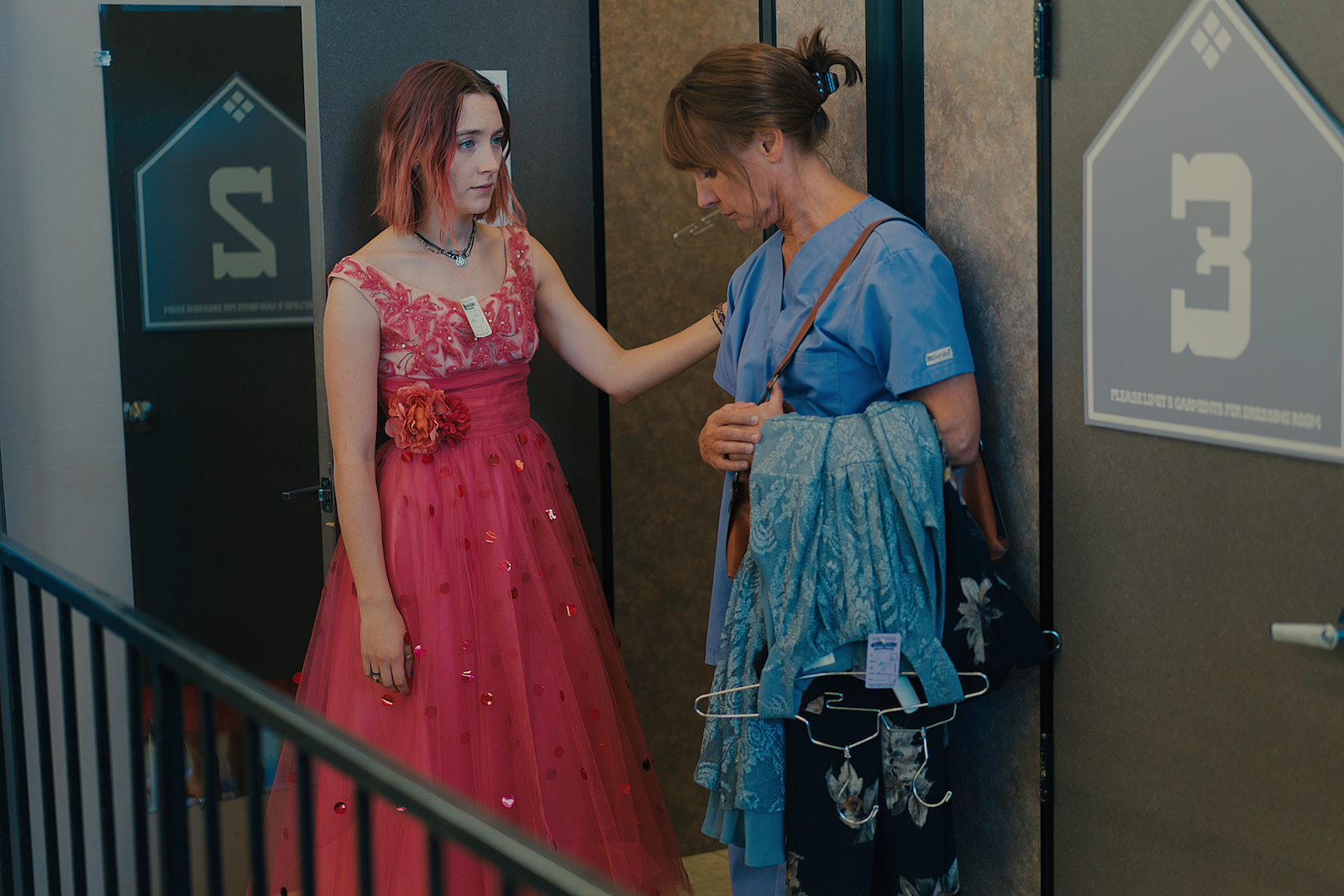
The frequent change of dynamics, emotions, and energies between the mother and the daughter, therefore, becomes emblematic of this inner dichotomy of wanting to grow and not grow at the same time. In the opening sequence, Marion is seen to validate Christine’s romantic disposition as she is moved and sheds a tear while listening to a musical on the radio while driving. Their difference of opinion sets in immediately when Christine tries to change the station to tune in to another song while Marion suggests turning the radio off, sitting quietly, and letting the piece seep into their souls.
A clash of ideas is witnessed at this point where the mother wants to hold on to the erstwhile ‘traditional’ norm of a slow-paced temperament. In contrast, the daughter wants to rush and readily move on, thereby indicating the fast pace of her generation. It is unreasonably difficult to comprehend how such a trivial argument could get ignited to such an extent so as to compel Christine to jump off the car while in motion.
As mentioned earlier, a similar instance occurs at the mall where Christine apparently drags her feet while walking, and her mother finds it annoying, which becomes the pretext of the dialogue sequence I chose to begin this essay with. Moments later, we witness Marion selecting the perfect dress and even stitching it to make it perfect for her daughter; what succeeds is her apprehension and a benumbing irritation that Christine would not be there at Thanksgiving with her family.
What could be a better example of wanting to grow and not growing at the same time? It is almost like a child keeping one leg outside the threshold of its house to go to the playground and placing it back immediately because of its mother’s fear of punishment who perhaps had instructed to finish homework. Who said mothers do not experience this dilemma? This hesitation? Matters are made even more complex for them as the one thing forbidding them from stepping out of their threshold is their own subconscious mind painted in the dark colors of traditional ideas and orthodox opinions. It is, thus, more of Marion VS Marion and Christine VS Christine. Or maybe even Christine VS Lady Bird?
Marion seems respectful of the name “Lady Bird” that Christine has given to herself on occasions when her mood isn’t berserk. She is even seen to address her by that name quite often while doing her daily chores. The same name, however, becomes ridiculous to her when she is perturbed or has picked up a fight with Christine. Besides, we also witness those intense moments of distress when Marion seems absolutely done dealing with “Lady Bird” owing to her unrealistic dreams and expectations of life.
She spits out truth bombs on and off as she makes her daughter aware that they are not rich and that the house they live in and the education they can offer is all that the family can afford. She says she takes it upon herself to be the “bad” one amongst her and her husband because someone must show “Lady Bird” the reality of the world and her life.
But could we ever look at Marion and say that she did not “want” her daughter to be able to fulfill all that she had ever dreamed of? Her face and the harrowing mid-wide and close-up shots of it speak more than she ever would, telling us how badly she wants her daughter to “be the best version of herself” because somewhere deep down, she knows that the present version of her surely isn’t the best. Her agony and frustration stem more from the realization and knowledge that her daughter isn’t quite able to prosper in the crises they are dealing with regularly. But she has nothing to do.
As much as she wants “Lady Bird” to cut her dreams according to her circumstances, she also detests that she must do so. Marion is too aware of what happens to high aspirations under life’s dusty, rugged baggage, and she is too fearful. What if her daughter’s dreams get crushed? What if she fails? And what if this talented girl has to truly resort to an ordinary life instead of an extraordinary one? A life that she never wanted? It is about time we realize that those words of anger, fierce contradictions, and rebukes were nothing but a collective defense mechanism to speak of the unwanted even before it actually turns true so as to prepare herself for the heartbreak.
Taking unconventional paths takes courage; in the present scenario, she is apprehensive about taking the leap of faith for her daughter. The solution? An utterly erroneous resort to ask her daughter not to have soaring dreams; in that case, there shall be nothing left to be broken.
Christine’s tender age and inexperience indeed give her the benefit of the doubt, but even then, what is notable is that she isn’t typically a “rebel without a cause.” As mentioned multiple times on prior occasions, Christine hates her current state of being. She is so resentful of her entire existence that it becomes difficult to point out if there is anything that she genuinely likes or enjoys. But peculiarly enough, this young girl really surprises us in moments where she takes a stand for her mother every time her friends try validating her rebellious nature towards her.
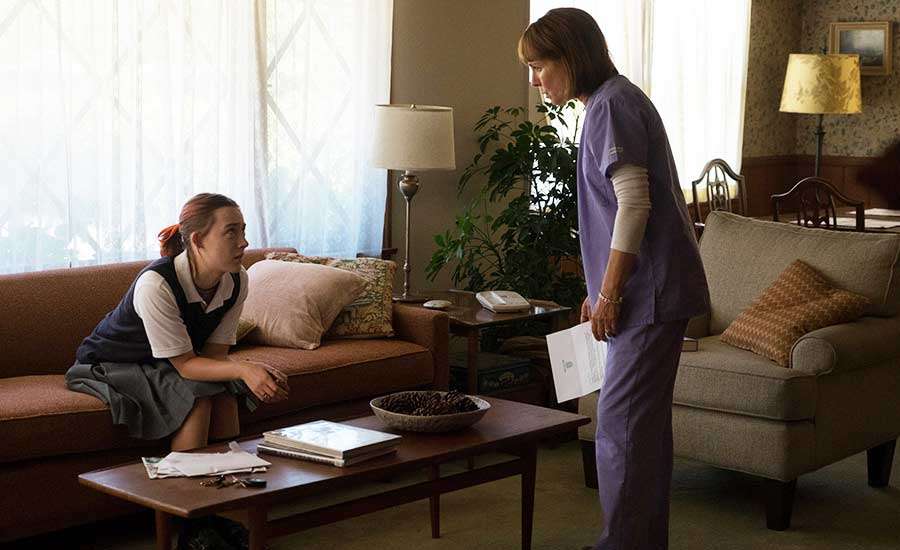
She is possessive, not only about her mother but also about those very opposing feelings that occur towards her in critical moments. Christine is okay to speak ill of her mother in front of her but will never let anybody else do the same behind her back, even if it means validating her feelings. She wants to make it up to her mother, and it is ultimately her approval that she constantly seeks out. It is evident in the way she keeps reiterating how she thinks her mother hates her. Why does she do that repeatedly? Well, a simple childish need for reassurance that she is wrong and that her mother truly loves her to the core.
In fact, by now, we do know after an in-depth dissection of Marion’s psyche that she loves Christine to the extent that she is terrified to lose her to the world and its atrocities. This clearly explains her claustrophobic agony when she learns about Christine flying off to study in New York. The complexity looms larger and larger as she completely stops talking to her daughter. Now, why is that? Isn’t she proud that her daughter got in, crushing all the odds that came her way? Well yes! But that is what we call fear of losing the child to the world—the agony of having to grow up aches a lot, especially for mothers.
As colorful, wild, and rebellious teenager as Christine was, we knew from the instant we saw her writing “Kyle” on the wall that she might be setting herself up for something. She, herself, validates our apprehension as we notice her trying hard to fit into the “rich and cool” group, and she keeps drifting further away from her existing personal realities with every passing minute. Her dissatisfaction and resentment for Sacramento, her frustration for always being asked to be grateful for whatever she was being provided with, and her constant struggle with harsh realities of desperation and financial insolvency come to be reflected in her inadvertent lie about where she lives.
She even gives up hanging out with her best friend, Julie, because she is adamant about being “cool.” She wants to lose herself in the glitz and glamour of a rich life, a life that, to her, is bereft of worries. But being rich does come at a cost. This realization strikes her like a storm in the park when she learns that she had misunderstood Kyle and mistook herself as the first one he had shared sexual intimacy with. A heartbroken “Lady Bird” finds herself sitting alone on the lawn outside Kyle’s place, and much to her surprise, her mother arrives in their car. The moment that succeeds is the one that made me tear up; Christine cries her heart out to Marion, and Marion, without even enquiring about anything, readily suggests doing their “favorite Sunday activity.”
This becomes the point where Christine’s mind hits the rock of reality. It is time for her to “Mother-Up” and walk homeward; in essence, she should try to sail back to her earlier tracks and undo all the wrong she has done trying to be someone else. Her mother, after all, isn’t completely wrong when she says that Christine needs to know the truth and grow up. She does realize that it is okay to cut down on some unrealistic expectations about life, and if she has to be someone else, she better be a better and a superior version of herself, even if that means listening to her mother. After all, mothers aren’t always wrong.
Why I use the name “Christine” instead of “Lady Bird” for most of this essay because I look at the “Lady Bird”-self of this young girl in retrospect as, in the end, she too willingly grows out of it. After setting sail to catch her dreams and finally stepping into her dreamland of exorbitant possibilities, she embraces the name her parents had gifted her. Having parted from her mother on despairing terms, “Lady Bird” has nothing except for the name “Christine,” a few lessons of “reality” from her mother, and a few memories of driving through the alleys of Sacramento to hold on to. Maybe “Mom” and “Sacramento” are now one and the same as the evolved “Christine.”
The home, the city, and the mother she grew to become the most frustrated about are all distant memories now. She realizes that she has been paying enough attention to the minute details of her city and her mother that they keep coming back to her as memories. And these memories are all she has, and she decides to clutch onto her heart in this new land of the unknown. For what is Love and Hate if not the two sides of the same coin? This appropriates my usage of the name “Christine” because it, quite evocatively, summarises the universal concepts of love in conflict and conflict in love.
Although initially, it would have seemed far more convenient to be in tandem with the rebellious disposition of Christine and frame “Lady Bird” as her alter ego, my mind is lured and compelled to take a different path. The seamless editing of shots that show Christine and Marion alternatively driving their car on the roads of Sacramento pushes me to conclude that it, perhaps, isn’t “Lady Bird” but Marion, who happens to be Christine’s alter ego. Not only so, but Christine also happens to go on to become the alter ego of Marion.
The mature, composed, organized, and realistic Marion is perhaps the ideal self for Christine that she tries to become, while on the other end, Christine’s wild, carefree, rebellious, and aspirational demeanor, perhaps, is ideal for Marion that she attempts hard to keep alive within her. As Christine tries to carve out her way through the “real” world, Marion works her best to combat her fears and insecurities and accepts growth and change. In their journey, we witness the journeys of all mothers and daughters working on their differences and inevitably growing close to mirroring each other in their respective attempts to “Mother up” and “Daughter down.”
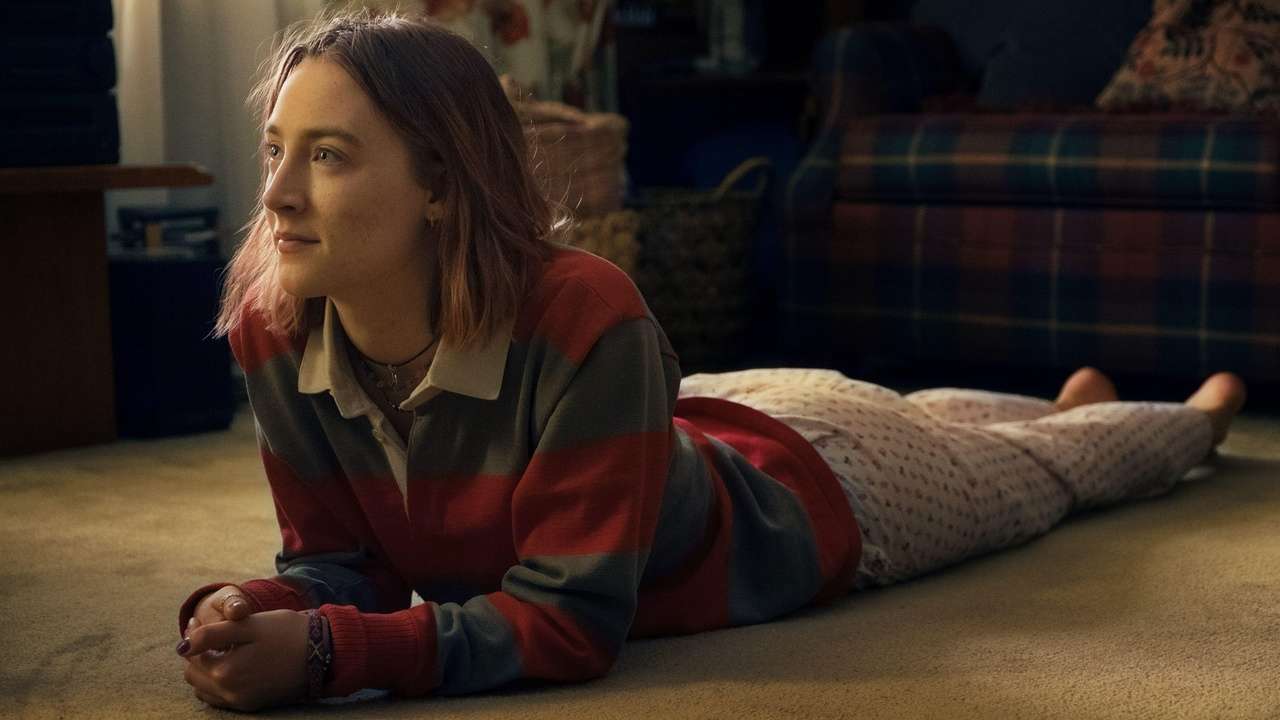
However, truth be told, the journey of “Daughter-ing down” happens to be far more challenging because mothers, as they are, have an intrinsic nature to stop, remain confined in their boxes, and see their daughters grow. They want to walk slowly so that their daughters can run. Why? Well, surprisingly, Greta Gerwig, quite magically, answers this in her most recent directorial gem Barbie (2023):
“We mothers stand still so our daughters can look back to see how far they have come.”
Ultimately, “I Love You and…Thank You” is all they treasure as the most fabulous gifts for the rest of their lives.

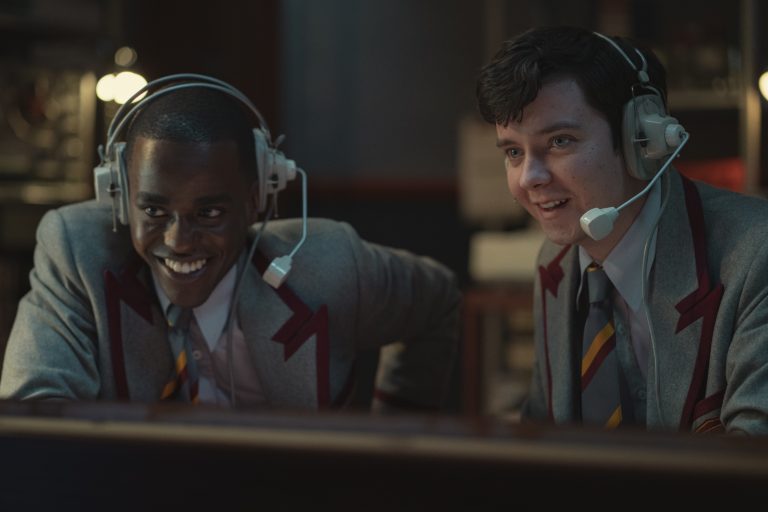
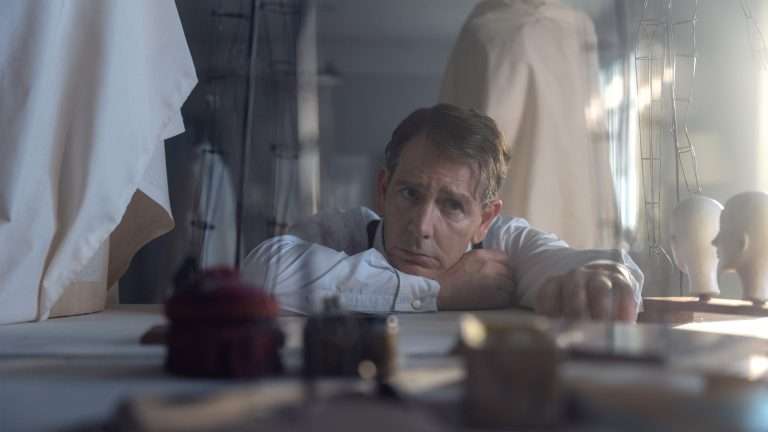
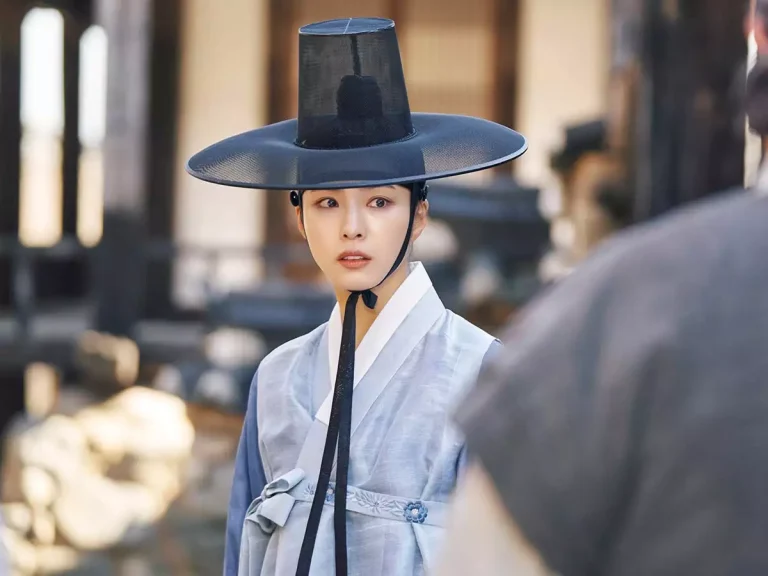
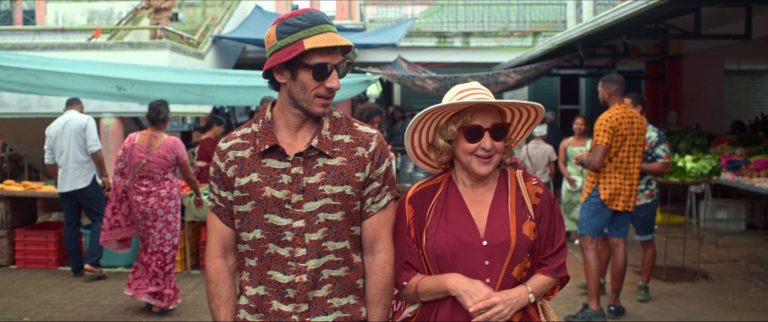
![Brawl in Cell Block 99 [2017]: A Bone-Crunching & Skull-Crushing Delight](https://79468c92.delivery.rocketcdn.me/wp-content/uploads/2017/11/brawl-in-cell-block-99-768x414.jpg)